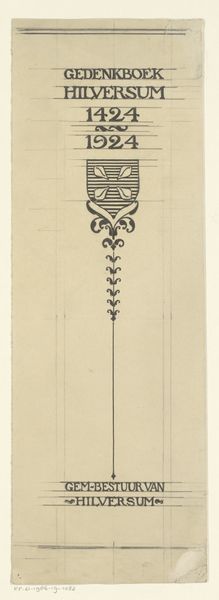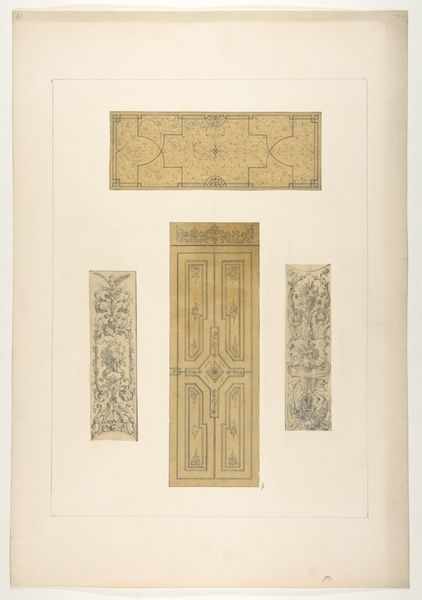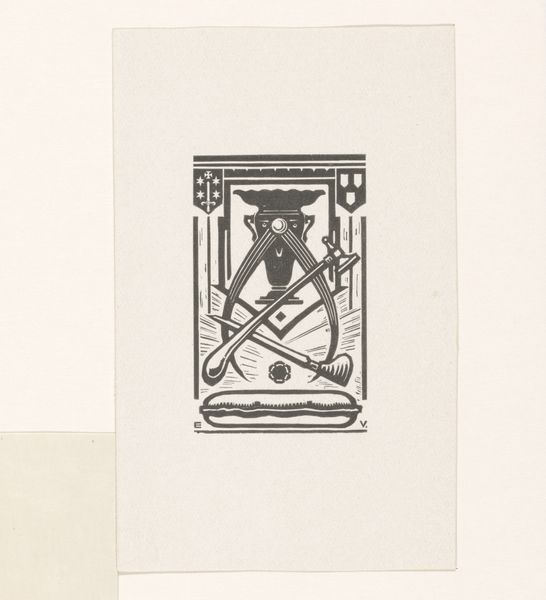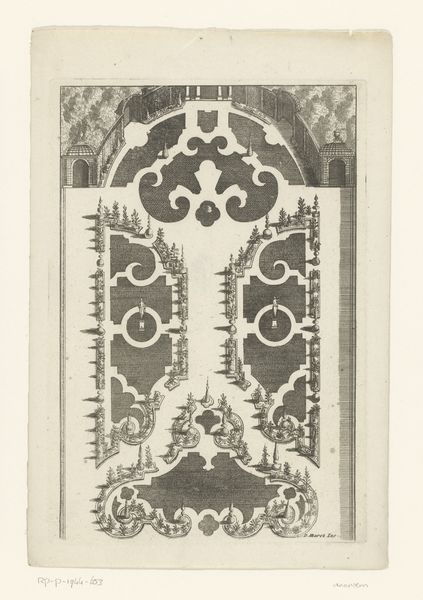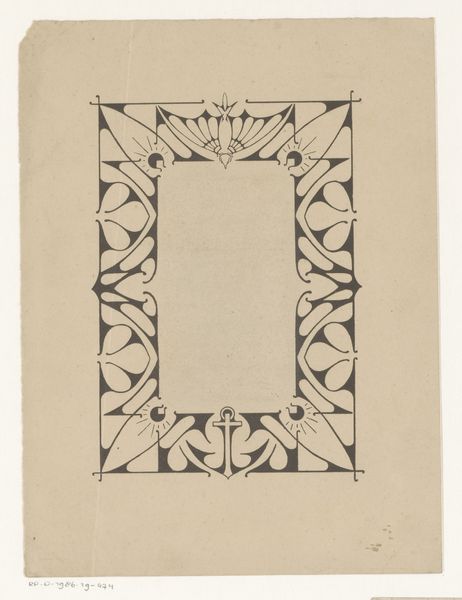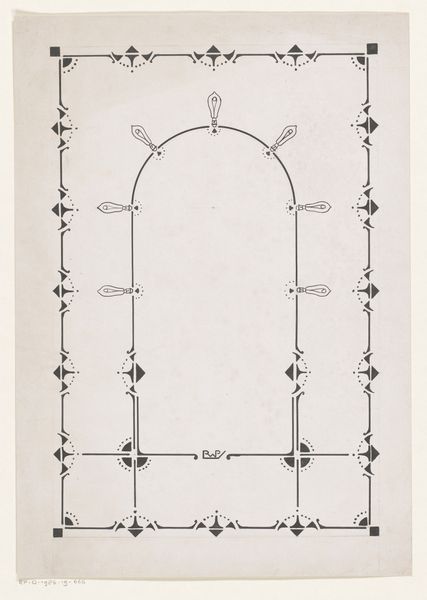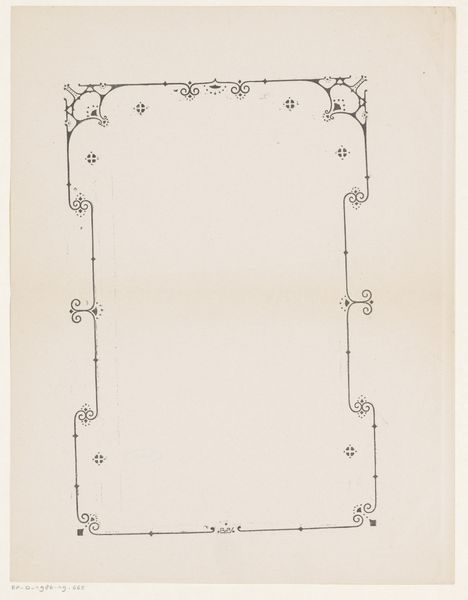
drawing, paper, ink
#
drawing
#
art-nouveau
#
paper
#
form
#
ink
#
geometric
#
line
Dimensions: height 193 mm, width 310 mm
Copyright: Rijks Museum: Open Domain
Curator: Looking at Samuel Jessurun de Mesquita's "Ornament met bloem," created between 1878 and 1944, I find myself initially struck by its somber formality. The black ink on paper lends a starkness to the otherwise decorative intent. What do you make of it? Editor: The contrast immediately jumps out. Such regimented geometry, almost architectural, rendered with this clearly hand-drawn quality. The interplay between organic intent and rigorous form feels quite contemporary, even though its origins root themselves earlier in art history. Curator: It’s interesting you note the architectural feel. During the period in which this drawing was conceived, there was, particularly among De Mesquita's contemporaries, a conscious effort to intertwine artistic practices with architectural design. The Rijksmuseum attributes this drawing to the Art Nouveau movement, an embrace of decorative design in everyday life. Editor: Absolutely, and look how the repeated vertical lines, counterbalanced by the circular motifs, establish an inherent rhythm. Are these circles "bloemen" in any representational sense? Or does their function reside solely in structuring the composition? Semiotically, we can consider if there is indeed a signified flower implied by this signifier. Curator: Semiotics aside, consider how such an image would function socially. As Art Nouveau permeated public spaces, it did so primarily through decorative motifs in functional art like wallpaper, textiles, and ceramics. These kinds of applications moved design from exclusive circles to objects used in ordinary, middle-class lives. Editor: Which raises the question: how would De Mesquita, a Dutch artist active in circles aware of international movements toward mass production and accessibility, reconcile with the almost artisanal, one-off quality of this line drawing? What position did the artist claim amid social progress toward functionality and artistic autonomy? Curator: Ultimately, considering the artist’s work in this style across mediums, I can't help but think of this drawing not as an isolated composition but as a modular element—a blueprint perhaps, designed to be expanded, reproduced, and adapted across different media. Editor: An adaptable symbol designed for its capacity to interact dynamically with social space through varying material embodiments. Food for thought!
Comments
No comments
Be the first to comment and join the conversation on the ultimate creative platform.




